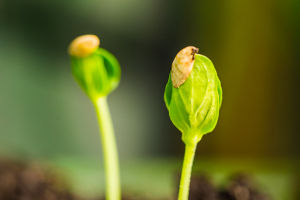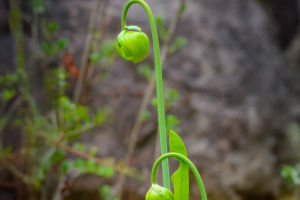Hello Lykkers! You might think plants are calm and quiet, but deep inside, they're constantly communicating—without saying a word. That's where plant hormones, or phytohormones, step in.
These tiny chemical messengers control everything from sprouting roots to ripening fruits.
While plants don't have brains, their hormone system makes sure they respond smartly to the world around them—light, water, gravity, even stress. In this guide, we'll take a relaxed stroll through the roles of five key plant hormones: auxins, gibberellins, cytokinins, abscisic acid, and ethylene. You'll see just how coordinated and clever plants really are—and you might never look at a leaf or flower the same way again.
Part 1: Growth and Movement – The Builders
Let's start with the hormones that help plants grow tall, sprout new shoots, and stretch toward light.
Auxins: The Light Chasers
These are the hormones that help plants lean toward sunlight. You'll notice this when a plant on your windowsill begins to bend toward the brightest part of the room. That's auxin in action. It spreads unevenly, causing one side of the stem to grow faster than the other.
But auxins don't stop there. They also tell roots when to grow and help form new branches and leaves. If you've ever taken a cutting and used rooting powder, you're actually giving it a dose of synthetic auxin to encourage root growth.
Gibberellins: The Stretch Agents
Now imagine a hormone that tells a plant, “It's time to shoot up!” That's gibberellin. This hormone encourages stem elongation, seed germination, and even flowering. You'll see its effect when seedlings suddenly bolt upward or when seeds break dormancy and start growing after being watered.
You don't need a lab to appreciate gibberellins—just watch how grass shoots up after a spring rain. It's the plant's way of waking up and saying, “Let's grow!”
Cytokinins: The Cell Splitters
Cytokinins work hand in hand with auxins, but they're more focused on making new cells. You can think of them as multitaskers: they encourage shoot growth, delay leaf aging, and help shape plant architecture.
When you see a lush, bushy plant full of side branches, that balance of cytokinins and auxins is likely playing a big role.
Part 2: Survival and Signals – The Protectors
Not all hormones are about growing up—some help plants slow down, protect themselves, or respond to change.
Abscisic Acid: The Peacekeeper
Sometimes, the smartest move is to pause. Abscisic acid tells seeds to stay dormant until conditions are just right. It also helps plants cope with drought by signaling leaves to close their stomata, reducing water loss.
When your succulent closes its tiny pores on a hot day, it's abscisic acid stepping in to say, “Let's conserve energy and water.”
Ethylene: The Ripening Whisper
This gas-like hormone might be the most familiar one. Ethylene controls fruit ripening and leaf drop. If you've ever placed a banana near an unripe avocado to speed things up, that's ethylene at work. Fruits naturally release it to communicate ripeness.
But ethylene also shows up during stress—after injury or flooding, it can help plants adjust quickly. It's like a gentle nudge that says, “Time to adapt.”
So, Lykkers, plant hormones may be invisible, but they're always active—guiding growth, managing stress, and keeping everything in rhythm. Auxins bend stems, gibberellins stretch them, cytokinins build, abscisic acid protects, and ethylene signals change.
The next time you see a sunflower turning toward the sky or notice fruit ripening on the counter, you'll know there's a chemical conversation going on. These silent signals are part of what makes plant life so wonderfully dynamic—and so worth exploring. Stay curious and keep looking closer—there's a whole world of green wisdom waiting just under the surface.


